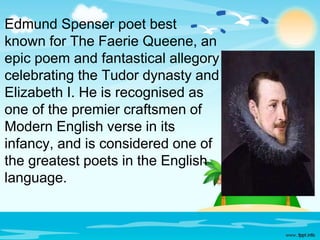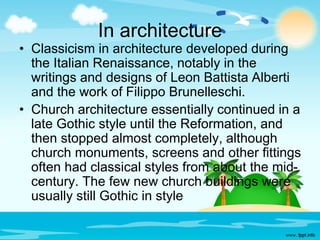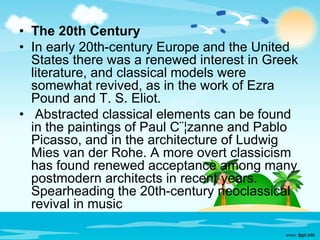Classicism refers to the admiration and imitation of ancient Greek and Roman styles and forms. During the Renaissance, classicism saw a revival as humanists collected and studied classical works. This led to the formation of schools of art and music applying classical orders of architecture and proportions. In the 17th-18th centuries, classicism strongly influenced French and English literature, exemplified by playwrights like Shakespeare, Jonson, and Racine adhering to Aristotle's rules of drama. In architecture, classicism developed during the Renaissance based on the writings of Alberti and Brunelleschi's works, employing classical columns and orders.
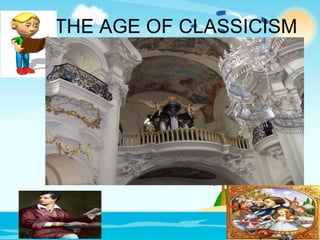
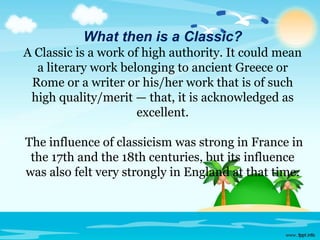

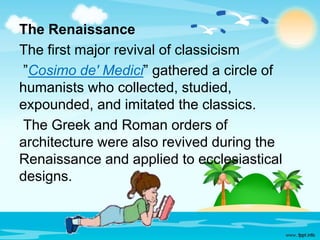


![PLAYWRITES
• Major English
Renaissance authors
• William Shakespeare an
English poet and
playwright, widely
regarded as the greatest
writer in the English
language and the world's
pre-eminent dramatist.[1]
He is often called
England's national poet
and the "Bard of Avon"](https://image.slidesharecdn.com/classicism-140903080545-phpapp02/85/Classicism-7-320.jpg)



